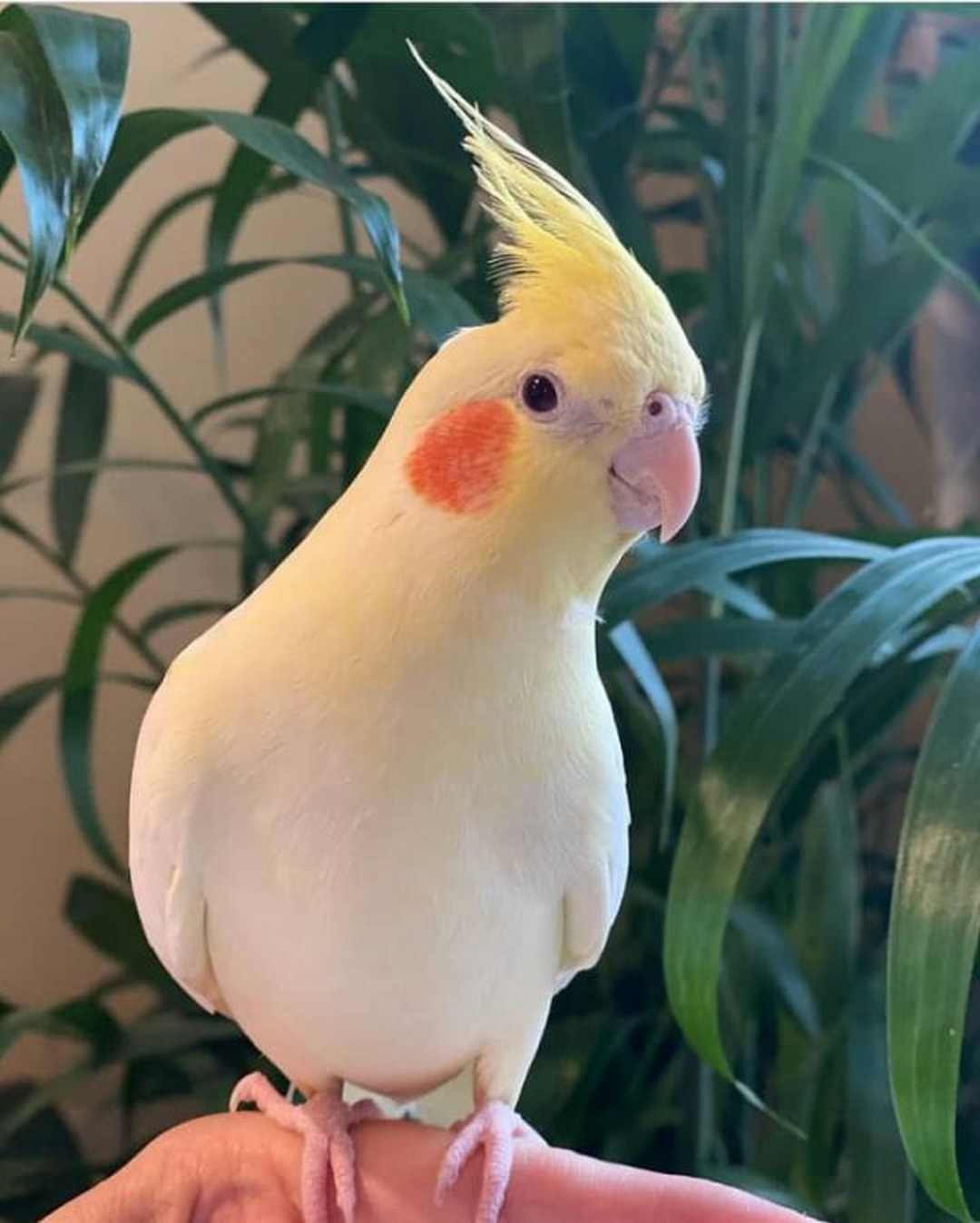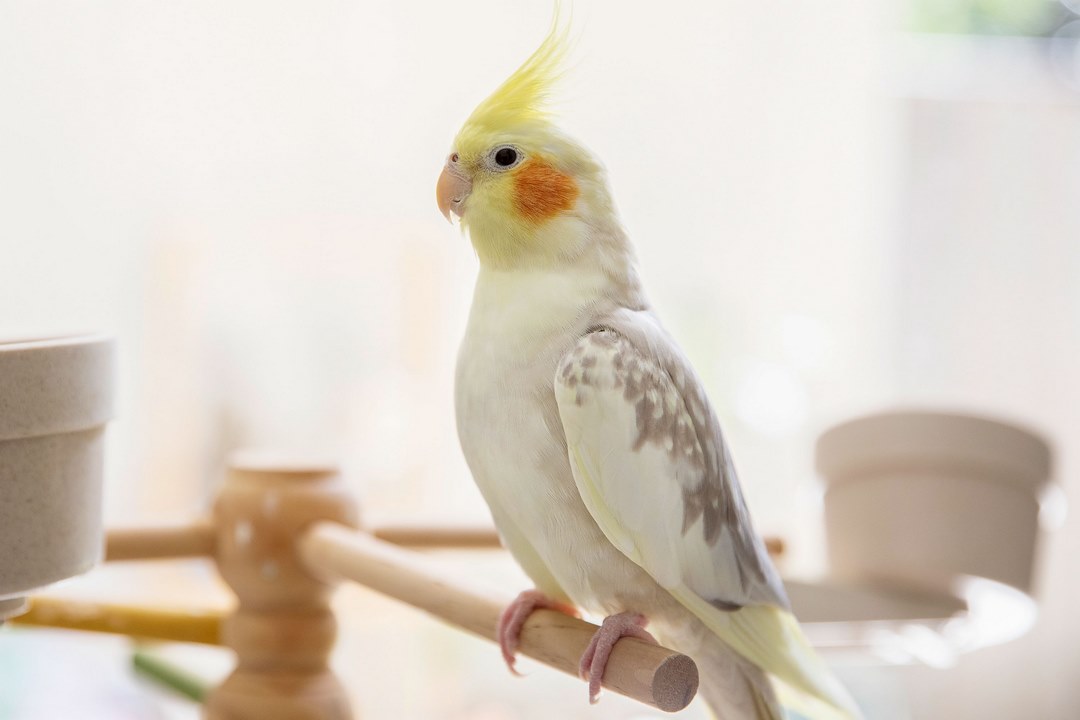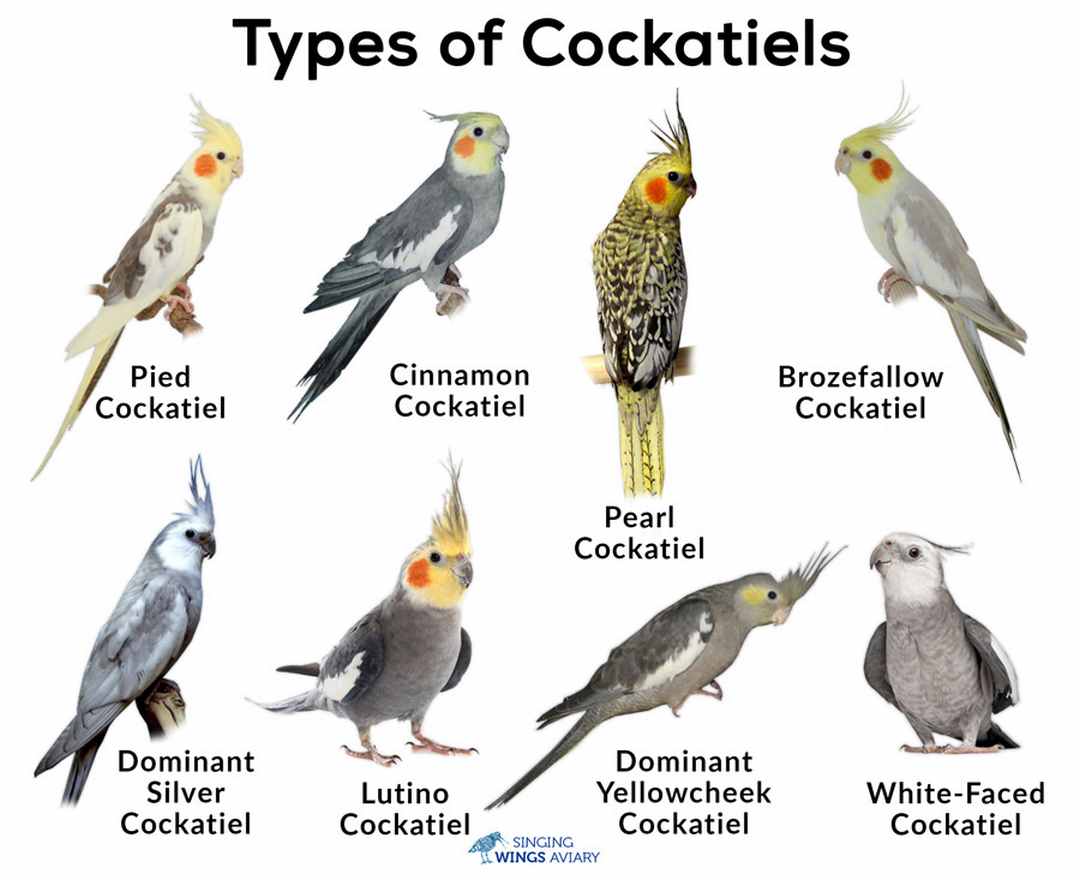The Cockatiel is a popular choice as a pet bird. It’s a small parrot with various color patterns and a distinctive crest. These birds are both attractive and friendly, making them easier to care for and tame compared to larger parrot species. While they can mimic speech, their words may not always be clear. However, they excel at whistling, and you can even teach them to whistle tunes.
Species Overview
- Common Name: Cockatiel
- Scientific Name: Nymphicus hollandicus
- Adult Size: About 28 to 33 cm in length, weighing between 60 and 115 grams
- Lifespan: 15 to 20 years with proper care, though some can live up to 30 years, which is rare
Origin and History
Cockatiels are native to Australia, where they’re mostly found in remote areas, particularly the northern parts of the continent. First discovered in 1770, they are the smallest members of the cockatoo family and share many traits with their larger relatives.
In the wild, they live in large flocks. Cockatiels became popular as pets in the early 1900s, largely due to their easy breeding in captivity and their friendly, docile nature. They were a natural fit for household life, though they can no longer be trapped or exported from Australia.
Personality
Cockatiels are gentle, affectionate birds that enjoy being petted and held. While they don’t necessarily crave cuddling, they like being around people and will happily greet their owners. Generally friendly, an untamed bird might nip, but you can curb bad habits early by ignoring unwanted behaviors. These birds aim to please.
It’s important to avoid scolding them, as this can make them shy away from human interaction. Reward good behavior and ignore bad behavior. Cockatiels are smart birds and can learn tricks over time, from waving and whistling to ringing bells. Many will spend hours talking to their reflection in a mirror.
Vocalization and Singing
While Cockatiels are capable of mimicking words and whistling, they aren’t as loud as other parrot species. Males are typically better at mimicking speech and sounds, but females can also learn well. They can imitate everyday household sounds, like alarm clocks, phones, and even the calls of wild birds.
Cockatiel Colors and Markings
Wild Cockatiels have a gray body, with yellow faces and crests and orange cheeks. Male Cockatiels generally have brighter and more vibrant facial colors, while females have subtle barring under their tail feathers. Over the years, selective breeding has led to a wide variety of color mutations.
Here are some of the most common mutations:
- Albino: Pure white feathers with red eyes, though some may have black eyes.
- Lutino: White feathers with a yellow face, orange cheeks, and red eyes.
- Lutino Pied: Typical Cockatiel colors replaced by light yellow or white with yellow streaks, orange cheeks, and yellow crests.
- Whiteface: White faces and crests, with black or light brown feathers.
- Pearl (Opaline): Different-colored spots creating a “pearl” pattern along their feathers.
- Cinnamon: Gray feathers with brown or warm-toned hues.
- Silver: There are both recessive and dominant silver mutations. Recessive silver Cockatiels have cooler gray feathers and red eyes, while dominant silver ones have warmer gray tones and dark eyes.
Other mutations include emerald, creamface, pastelface, and yellow cheek Cockatiels. Gender differences aren’t always obvious based on color alone, especially in younger birds, and DNA testing is often needed to confirm their sex.
Caring for a Cockatiel
Keeping a pair of Cockatiels can provide companionship for them, though they may bond less with you or be less vocal. If you only have one bird, it’s essential to spend a significant amount of time with them each day to prevent loneliness. If your lifestyle doesn’t allow for this, consider getting a second bird to keep them company and prevent boredom.
Cockatiels are naturally messy and produce powder dust on their feathers for grooming, which can leave a layer of dust around their cage. Bathe or mist them weekly, and clean the cage frequently. Most Cockatiel cages come with removable trays for easier cleaning.
Male Cockatiels are active and playful, so they need a large cage, ideally measuring at least 60x50x50cm. The spacing between the cage bars should not exceed 1.5cm to prevent them from getting stuck. Horizontal bars also offer opportunities for climbing and exercise.
Cages should have enough space for several perches at different levels, allowing the bird to move freely. It’s also important to trim their wings and nails twice a year. If you’re unsure how to do this, a vet or bird breeder can help.
Common Health Issues
One of the most common health problems in Cockatiels is malnutrition, as many birds are fed only seeds. A well-balanced diet including fruits, vegetables, and pellets is necessary to prevent nutritional deficiencies. Cockatiels can also develop fatty liver disease, often caused by high-fat diets and a lack of exercise.
Respiratory infections are common, as are bacterial diseases like psittacosis, which can cause symptoms such as wheezing, sneezing, and nasal discharge. If you notice any signs of illness, take your bird to an avian vet as soon as possible for treatment.
Diet and Nutrition
A varied diet is key to keeping a Cockatiel healthy. While seeds can be part of their diet, they should only make up about 30% of it due to their high fat content. Pellet-based diets are a great option, as they ensure balanced nutrition and prevent birds from picking out only their favorite seeds.
In addition to pellets and seeds, offer your bird fresh fruits and vegetables daily. Cockatiels typically eat about a tablespoon of food per day. It’s important to remove any uneaten fruits or vegetables after an hour to prevent spoilage.
If your bird is a picky eater, be persistent in offering a wider variety of foods. You can also provide protein sources like boiled eggs, cooked legumes, and sprouted seeds. Avoid feeding your Cockatiel avocado, chocolate, coffee, or salt, as these are toxic to birds.
Exercise
Like all parrots, Cockatiels need regular activity to stay healthy both physically and mentally. Make sure the cage is spacious enough for the bird to fly. Provide plenty of toys, perches, and ladders to stimulate their playful nature. If possible, let your Cockatiel out of the cage for at least an hour daily. This helps with socialization and allows the bird to stretch its wings.







